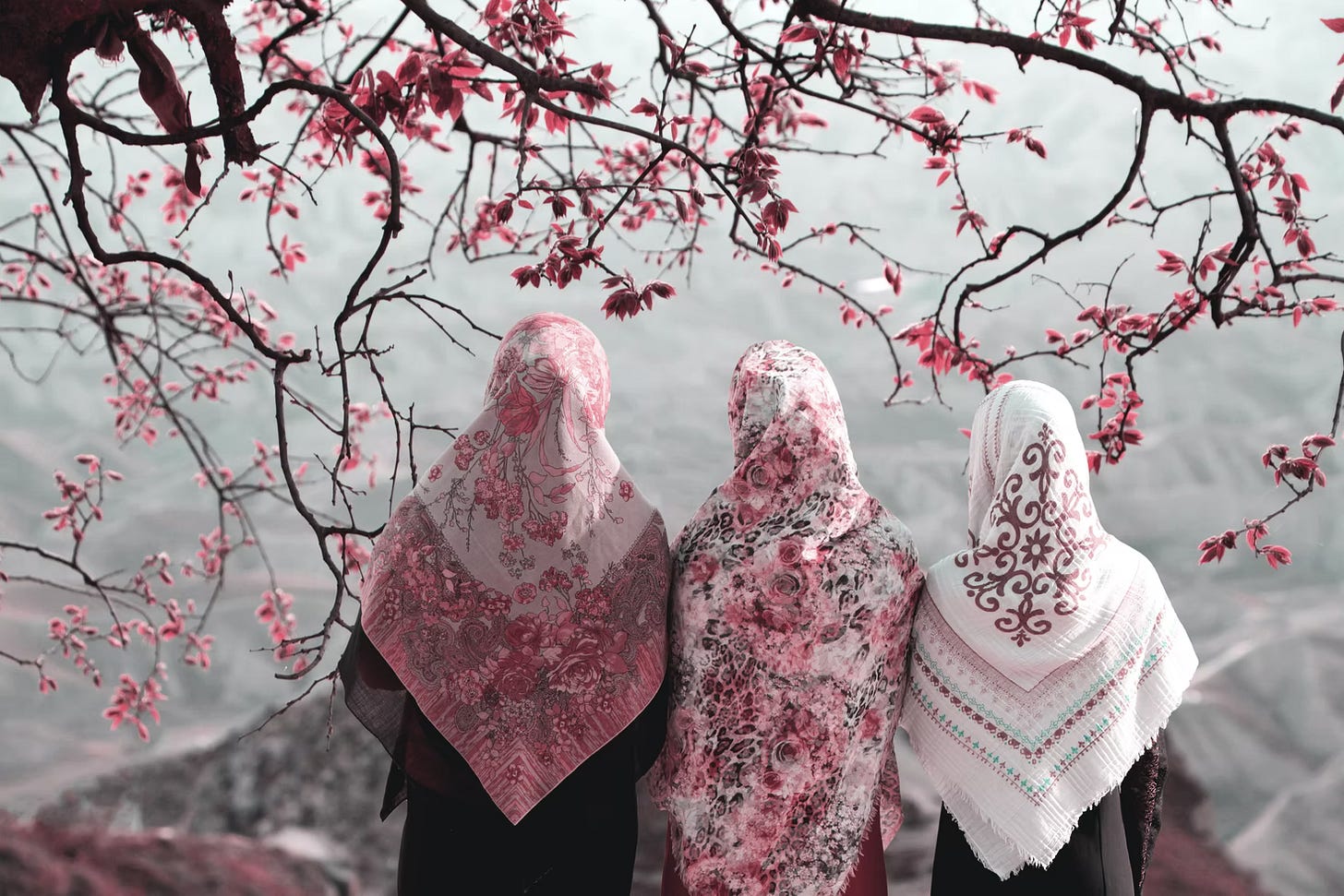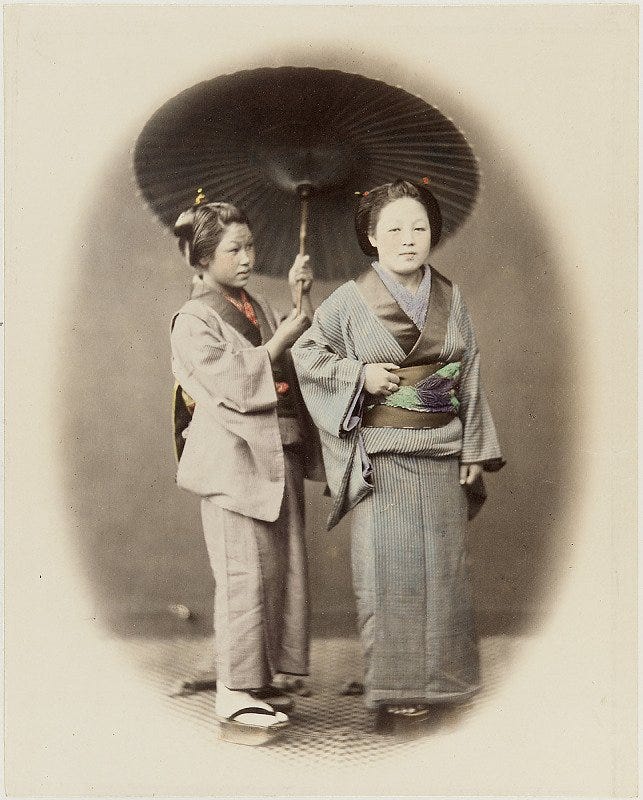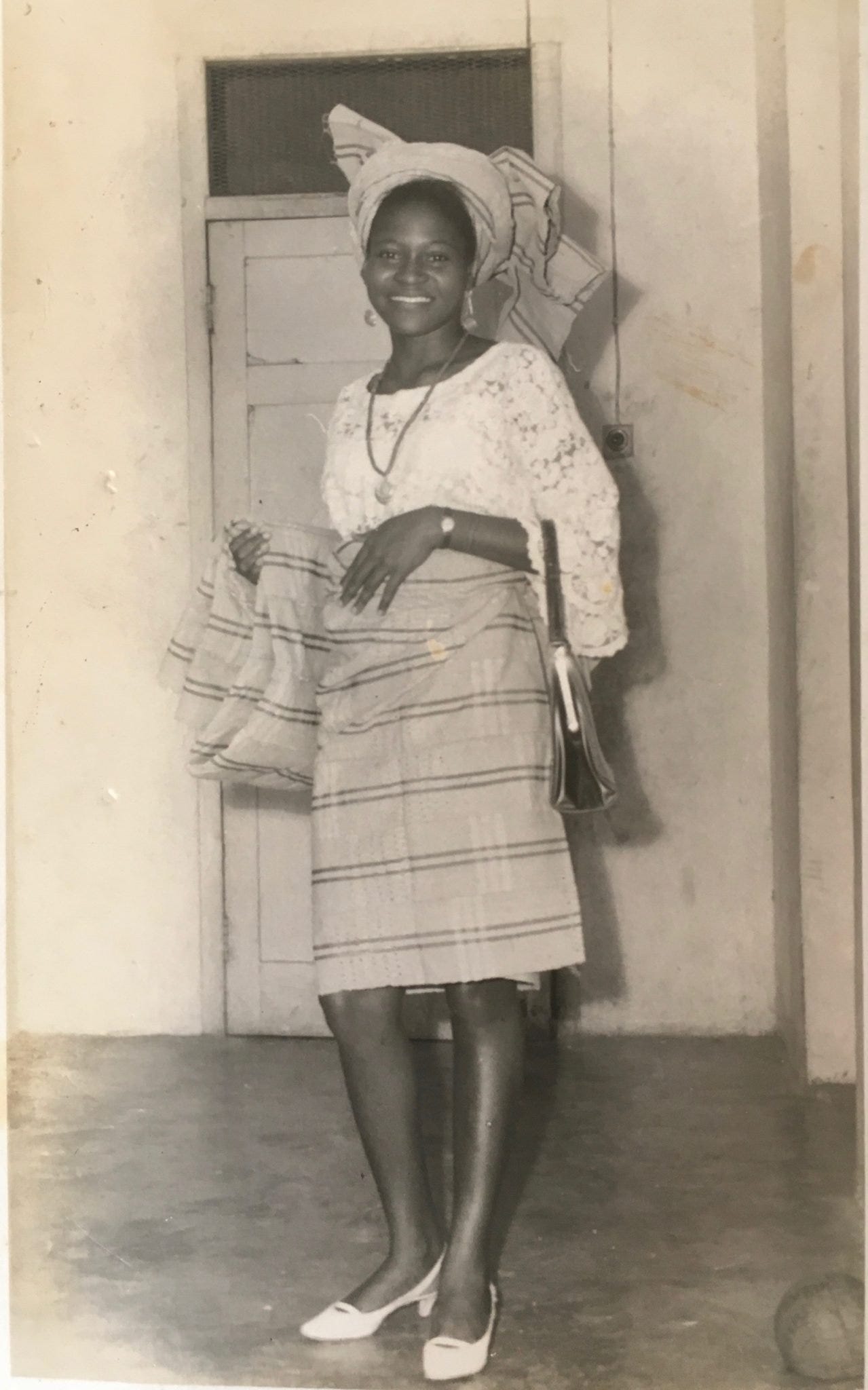A match made in fashion database heaven.
An exciting update about our November fundraiser; re-examining "fashion capitals"; Jareh's super-fashionable Nigerian mother; and our latest news covers the good, the bad and the ugly in fashion.
This week at the Database…
Hi everyone,
I need to talk business with you for a moment.
We are mid-way into our November fundraiser, and the goal we are striving for is $20k. It’s a large number, but we are going for it, and now Tommy Hilfiger & PVH Corp. are helping us raise the stakes by MATCHING the amount that we raise! So, if you are able, please give what you can, which will bring us just a bit closer to our goal. If you’re unable to give, can we count on you to spread the word?
As a reminder, I’m donating my time each weekend at our Instagram account to boost our fundraiser with a “Saturday Coffee Chat” series via IG Live! Our first guest was our in-house researcher, Laura Beltrán-Rubio, as she explained her research and how she’s carving out a space for herself in fashion academia. This past Saturday, researcher Faith Cooper joined me and explained the work that she is doing with her fabulous project, The Asian Fashion Archive. During our talk, Faith mentioned the importance of The Fashion and Race Database, and particularly how she admires our determination to pay our contributors. I want the database to provide a new model in fashion academia, driven by reader and industry support, because the topics that we spend our time researching is critical to building a more intelligent and compassionate fashion world.
By the way, if you’ve got some free time this Saturday (November 20) at 10am EST, the topic for this weekend’s IG Live will be “FRD Q&A.” It will just be me, answering your questions about the database, the work we do or even the work that I do. See you there?
– Kim Jenkins, Founder
From the Library
Global Fashion Cities

Hegemonic narratives of fashion established four traditional 'fashion capitals' in the cities of Paris, New York, London, and Milan. However, several other cities around the world have developed their own fashion industries and become important players in the fashion systems that surround them. This reading list explores the rise and (at times) fall of a number of fashion cities beyond the traditional fashion capitals that continue to dominate the writing of fashion history.
– Laura Beltrán-Rubio, Researcher
Globalizing Muslim Fashion

This week’s reading list takes a global perspective on approaching Muslim fashion. From the distinctions between veiling in different regions, including Muslim women who choose not to wear a veil, it becomes apparent that Muslim fashion is not monolithic. Muslim fashion transcends expressions of faith, and the dress practices acknowledged in these sources demonstrate modesty, glamour, and diversity.
– Alliya Lopez, Assistant Researcher
‘The Library’ and the ‘Reading List’ is where we collect and organize countless educational sources all in one place. Referenced by educators, students, fashion enthusiasts and curious minds, this multi-faceted repository provides an expanding selection of tools for learning about all matters connected to fashion, appearance, power and the impact of ‘race.’
Objects That Matter
Kimono

The Kimono, which literally translates to 'thing to wear' in English, is recognized worldwide as the national dress of Japan. It is a fashion that is often perceived as timeless and unchanging, reflecting an outsider’s judgment of Japanese values. However, this false notion denies the rich history of the Kimono which fosters identity, innovation and artistry
– Adriana Hill, Former Research Assistant
'Objects That Matter' gathers numerous fashion objects outside of the Western lens and provides a brief history, showing why they matter, as many of these items have been widely appropriated or referenced.
Our Fashion History
Agatha’s Fashion: A Confluence of Pre and Post-Independence Nigerian Styles
Nigerian women who experienced the birth of the new nation in 1960 experimented with both indigenous and Western fashion influences, with an ethos informed by updating styles worn by previous generations – i.e. the women who came before them including mothers, aunties and so on. My mother, Agatha Gbegbaje-Das (née Mamoh) was part of this new generation of Modern-Nigerian women who, in the 1960s through to 1970s, celebrated their identity through fashion, reflective of a generation who were bold, confident, experimental and forward-thinking in their sense of dress, knowledge and choice of textiles.
– Jareh Das, Guest Contributor
'Our Fashion History' shares stories from contributors' photo albums in effort to expand the narrative and visual landscape of fashion history.
The Calendar
Rights and Rituals: The Making of African American Debutante Culture (exhibition)

In November 1961, President John F. Kennedy and California Governor Pat Brown greeted 28 young ladies as they made their debut into society during The Links, Incorporated Los Angeles Chapter’s 10th annual cotillion at the Beverly Hilton Hotel. The sitting president was foremost paying respect to singer Nat King Cole, whose daughter Carole was debuting that evening, yet his presence epitomized the emergent power of African American debutante culture.
[...]
With a focus on the 1880s to the transformative decades of the 1950s and 1960s, Rights and Rituals looks specifically at how Black debutante culture developed in the West and offers a new perspective on its participants’ contributions, both visible and invisible, to the fight for civil rights.
Learn more below about this ongoing exhibition at the California African American Museum.
A global network of events, conversations and opportunities will continue to evolve the discourse on fashion and race. ‘The Calendar’ remains on the pulse and keeps you looped in.
In the News
Issue 14: November 12, 2021

In Issue 14 of In the News, we examine how fashion supply chains can perpetuate environmental racism, highlight the work of CFDA Lifetime Achievement Award Winner Dapper Dan, and discuss Hudson’s Bay Company’s problematic relationship with Indigenous peoples.
– Anu Lingala, Contributor
Included in this issue:
We uncover the environmental racism that is ongoing worldwide for the sake of fashion consumption;
Industry legend Dapper Dan was the first Black designer to receive the Geoffrey Beene Lifetime Achievement Award at the CFDA Awards;
Canada’s Hudson’s Bay Company faced criticism upon their announcement of a new BIPOC advisory board for their newly launched Fashion Fund, which lacked Indigenous representation (the “I” in “BIPOC”).
Read on for our latest headline commentary and discover the other stories on our radar.
‘In the News’ provides a curated roundup of headlines by contributor Anu Lingala, drawing connections between the news and global affairs with our unique library of resources and essays to contextualize what we are experiencing.
That’s it for now. Please stay safe and we’ll see you in the next issue.
Yours in service and solidarity,
The Fashion and Race Database Team
Laura Beltrán-Rubio, Researcher
Alliya Lopez, Research Assistant
Gillani Peets, Research & Editorial Intern
Kendall Laws, Project Manager
Daniela Hernandez, Media Editor
Anthony Palliparambil, Jr., Content Editor
Kimberly Jenkins, Founder




